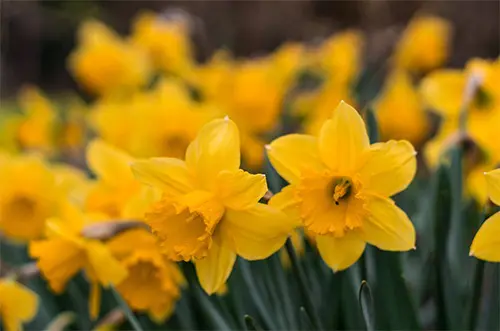Are Daffodils Poisonous: Admire and Approach with Caution

What are daffodils?
The bright yellow and white flowers of the daffodils, also known as the Narcissus plant family, make them beautiful to look at and have become increasingly popular. However, did you know that daffodils can be quite harmful and potentially poisonous to both humans and pets? Are daffodils poisonous? Read on..
What makes a daffodil poisonous?
From the bulb to the stem to the petals, daffodils contain a toxic chemical called lycorine. The daffodil bulb contains the highest amounts of lycorine. Lycorine is highly poisonous, and can be fatal if ingested in a large enough amount. Lycorine is also found in other plants, including bush lilies and surprise lilies. In addition to lycorine, daffodil bulbs and sap contain microscopic particles called oxalates. Oxalates can cause a burning sensation or irritation as a result of their needle-like quality.
How are people poisoned by daffodils?
Most commonly, poison centers are contacted after daffodils are ingested accidentally. Young children may eat a part of the flower or stem while playing outdoors. People foraging accidently eat daffodil bulbs as they can be mistaken for onion bulbs.
Symptoms of daffodil poisoning
Accidental ingestion of any part of the daffodil plant can lead to uncomfortable symptoms. Symptoms of lycorine toxicity can include:
- Nausea
- Diarrhea
- Vomiting
- Stomach or abdominal pain
Most people who eat daffodil experience symptoms that are mild and resolve without medical care, but rarely, more serious cases may arise.
Handling daffodils and their bulbs can cause a rash in certain individuals. Contact with sap from the daffodil may also cause mild skin irritation.
Preventing daffodil poisoning
Prevention of accidental daffodil ingestion is relatively simple. Keep daffodils out of reach of young children and pets. Store daffodil bulbs away and out of reach when not actively planting them. If you do choose to plant them in your garden, monitor children and pets closely when they are near the plant.
What to do in the event of an exposure
First aid after ingesting part of a daffodil plant includes rinsing the mouth with water and offering a drink of water. Wash skin with warm soap and water after handling bulbs or coming in contact with the sap. Contact your local poison center by calling 1-800-222-1222 for assistance. If someone is having difficulty breathing or swallowing, call 911.